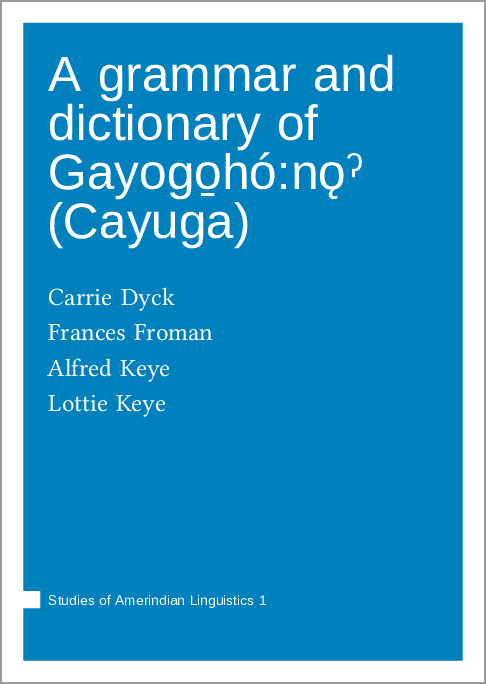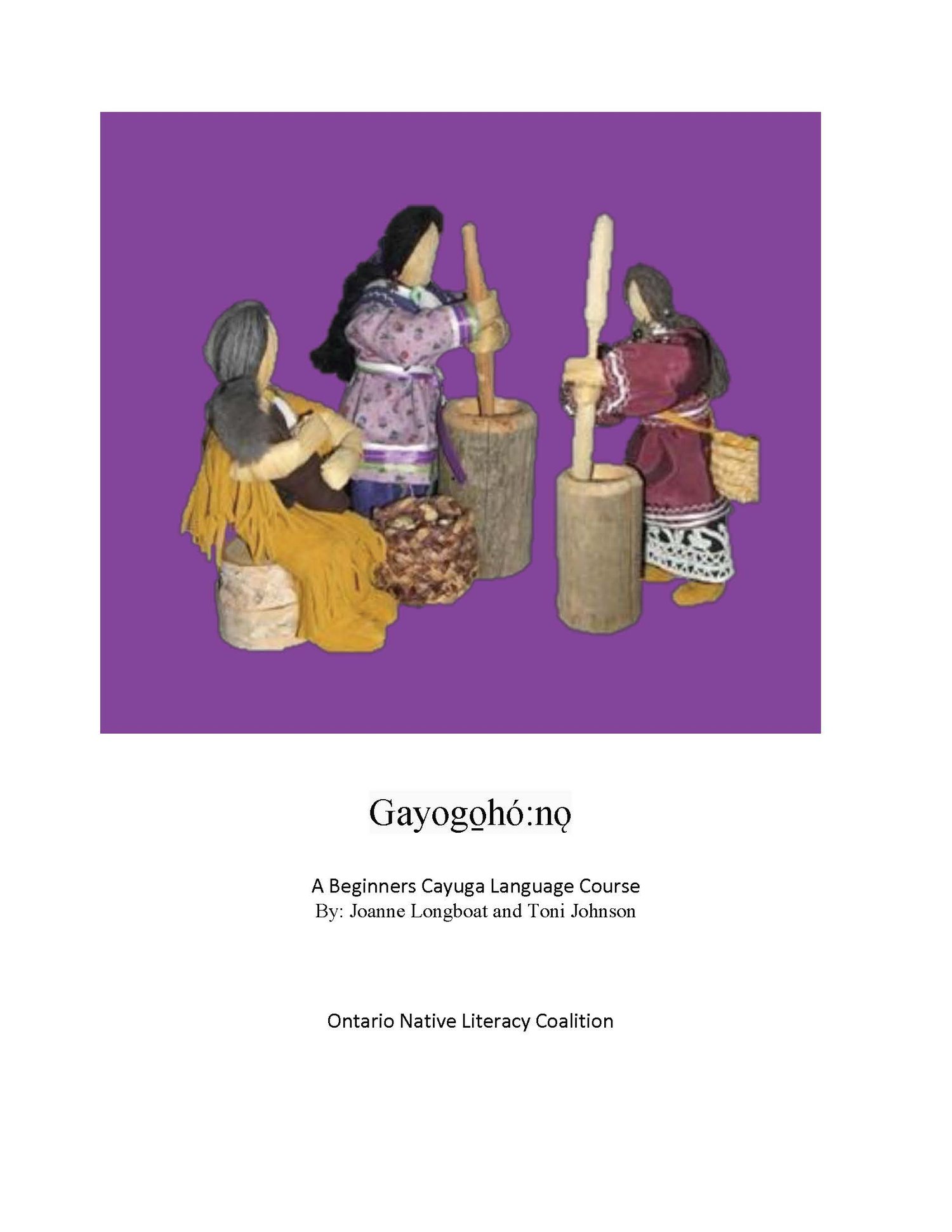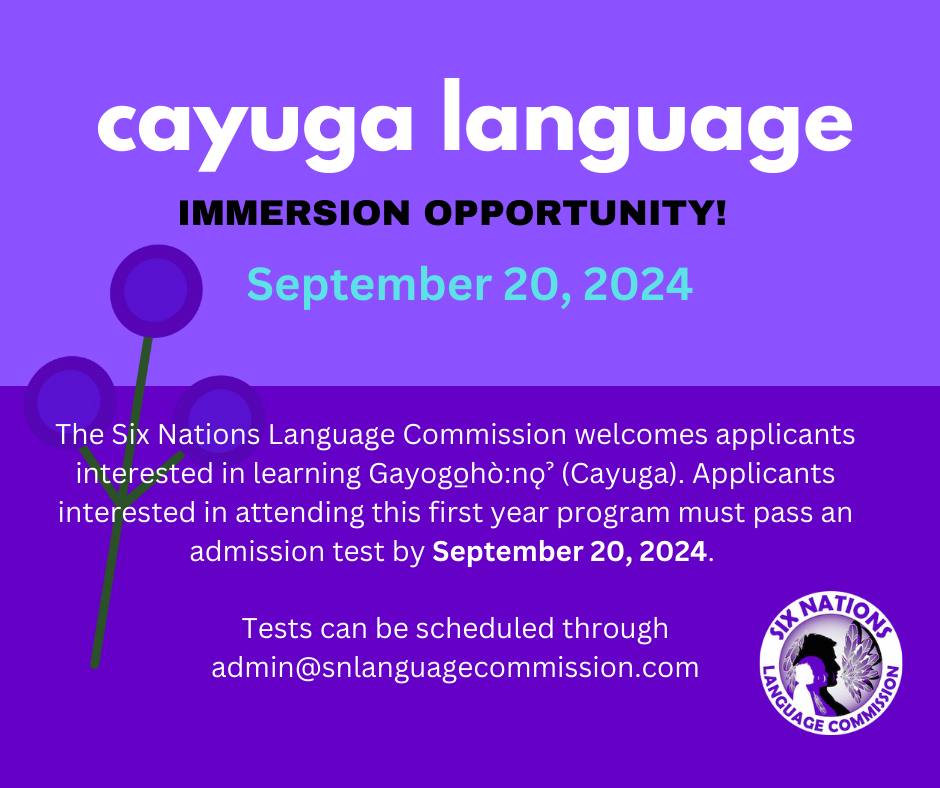
The Race Against Silence: Rekindling the Cayuga Language
By [Your Name/Journalist’s Name]
OHSWEKEN, ON – The air within the Onkwawenna Kentyohkwa language immersion school, nestled deep within the Six Nations of the Grand River Territory, buzzes with a sound that few outside this community understand, yet one that carries the weight of centuries: the Gayogo̱hó꞉nǫʼ language, or Cayuga. It’s a language of the Haudenosaunee (Iroquois) Confederacy, a tongue that once echoed across vast stretches of what is now New York State and Southern Ontario. Today, however, it teeters precariously on the brink of silence, a stark reminder of the devastating impact of colonization, assimilation policies, and the residential school system.

For decades, the vibrant cadence of Cayuga has been fading, the number of fluent speakers dwindling to a critical few, almost all of them elders. Their passing represents not just the loss of individual lives, but the potential disappearance of an entire worldview, a unique way of understanding the universe, and an irreplaceable part of the Haudenosaunee identity. Yet, against this somber backdrop, a powerful movement of reclamation is taking root, driven by dedicated elders, passionate young learners, and innovative community programs fighting a tenacious battle to bring the language back from the brink.
The Echoes of a Dying Tongue
To understand the urgency of this linguistic preservation, one must grasp the profound loss that accompanies the death of a language. For Indigenous peoples, language is not merely a tool for communication; it is intrinsically linked to land, culture, ceremonies, traditional knowledge, and spiritual practices. It carries the nuances of a people’s history, their philosophies, and their very being.
"When we lose our language, we lose a way of thinking, a way of seeing the world that is unique to our people," explains Ienonhsothos (Beverly Doxtator), an elder and one of the last remaining fluent Cayuga speakers. Her voice, though soft, carries the weight of a generation who witnessed the deliberate suppression of their mother tongue. "Our language describes our relationship to the land, to the water, to each other. It’s not just words; it’s our identity."
The decline of Cayuga, like many Indigenous languages in North America, is a direct consequence of systematic policies designed to assimilate Indigenous peoples into mainstream society. From the mid-19th century through the late 20th century, thousands of Indigenous children in Canada were forcibly removed from their families and sent to residential schools, where they were forbidden to speak their native languages, often under threat of severe punishment. "They told us our language was savage, that it was a barrier to progress," recalls an elder, who wishes to remain anonymous due to the painful memories associated with his residential school experience. "We learned quickly that if you spoke Cayuga, you would be beaten. So, we stopped. And then, our children didn’t learn it from us, because we were afraid for them."
This deliberate cultural genocide severed intergenerational language transmission, creating a "lost generation" of speakers and leaving subsequent generations disconnected from their linguistic heritage. Today, estimates suggest there are fewer than 50 fluent, first-language Cayuga speakers left, the vast majority over the age of 70. This makes the effort to revitalize the language a literal race against time.
Seeds of Revival: Community-Driven Efforts
Despite the daunting challenges, the Six Nations community has mobilized with remarkable determination. The cornerstone of their revitalization efforts is Onkwawenna Kentyohkwa, which translates to "Our Language School." Founded in 1999, it stands as a beacon of hope, offering intensive, immersive language programs for adults and children.

"We started with just a handful of students and a few dedicated elders," says Theresa Longboat, one of the school’s long-standing administrators. "Our philosophy is full immersion. From the moment you walk through our doors, you hear and speak only Cayuga. It’s challenging, but it’s the most effective way to truly internalize the language."
The school employs a "master-apprentice" model, pairing fluent elders with eager learners, fostering an intimate and authentic learning environment. Students spend countless hours listening, mimicking, and conversing with their teachers, absorbing not just vocabulary and grammar, but also the subtle cultural nuances embedded within the language. This method is particularly crucial given the scarcity of written materials and the oral tradition of the Cayuga people.
Beyond formal schooling, the revitalization efforts extend into the community in various forms:
- Cayuga Language Camps: These camps offer immersive experiences, particularly for youth, combining language learning with traditional activities like storytelling, basket weaving, and lacrosse, reinforcing the cultural context of the language.
- Online Resources: Recognizing the need to reach learners beyond the physical classroom, community members and linguists have collaborated to create online dictionaries, phrasebooks, and even interactive apps. These digital tools are invaluable for independent study and for connecting learners dispersed across different territories.
- Music and Arts: Contemporary Cayuga artists are incorporating the language into their music, poetry, and visual arts, making it accessible and appealing to younger generations and integrating it into modern cultural expressions.
- Family-Based Learning: Encouraging families to use Cayuga at home, even if starting with simple phrases, is a vital step. "The home is where the language truly lives," emphasizes Ienonhsothos. "If we can get parents speaking it to their children, even a little, that’s where the real strength comes from."
Challenges on the Path to Fluency
While these initiatives have yielded promising results, the path to widespread fluency is fraught with challenges. Funding remains a constant concern, as comprehensive language programs require significant resources for teacher salaries, materials, and facilities. The pool of fluent speakers available to teach is also shrinking, putting immense pressure on the remaining elders.
Moreover, learning a language as complex and polysynthetic as Cayuga – where long words are formed by combining many morphemes, each adding a layer of meaning – requires immense dedication and time. For adults with jobs and family responsibilities, achieving fluency can take years of intensive study. The trauma of residential schools also continues to cast a long shadow, affecting the willingness of some elders to speak, and the readiness of some younger people to embrace a language associated with past pain.
"It’s not just about learning words," says Onondaga language teacher Kahawennó:ron (Melanie Printup Hope), who has observed the struggles and triumphs of similar efforts. "It’s about decolonizing the mind, reclaiming identity, and overcoming generations of trauma. It’s profoundly healing work."
A Future Spoken in Cayuga?
Despite these hurdles, there is a palpable sense of hope and determination. The growing number of young people enrolling in language programs, the increasing presence of Cayuga phrases in community events, and the renewed pride in Indigenous identity are all positive indicators.
"My grandmother spoke Cayuga, but my parents didn’t learn it fluently because of what they went through," shares a young learner named Tekarontake, in his mid-20s, who is a dedicated student at Onkwawenna Kentyohkwa. "For me, learning the language is about healing that wound, connecting with my ancestors, and ensuring that my future children will grow up hearing it. It’s about our sovereignty, our right to be ourselves."
The revitalization of the Cayuga language is more than an academic exercise in linguistic preservation; it is a fundamental act of decolonization and self-determination. It represents a community’s unwavering commitment to reclaim what was stolen, to mend the intergenerational trauma inflicted by oppressive policies, and to empower future generations with the full richness of their heritage.
As the sun sets over the Grand River, casting long shadows across the Six Nations Territory, the sounds of Gayogo̱hó꞉nǫʼ may still be whispers, but they are growing louder. Each word learned, each phrase spoken, each song sung in Cayuga is a defiant act of resilience, a testament to the enduring spirit of a people determined to ensure their language, and with it their unique worldview, continues to resonate for generations to come. The race against silence is far from over, but in the heart of the Six Nations, the sound of Cayuga is rising, carrying the promise of a vibrant future.


